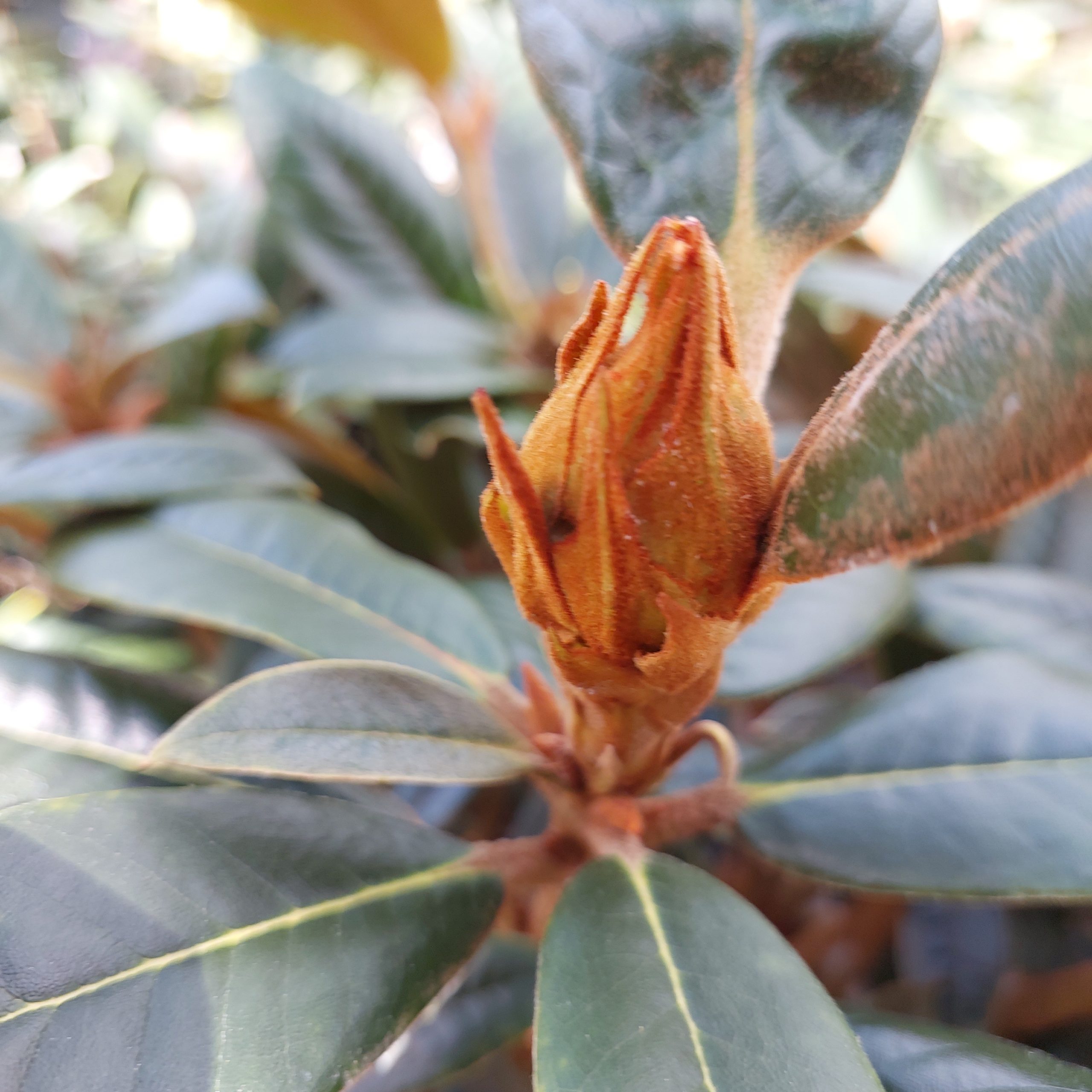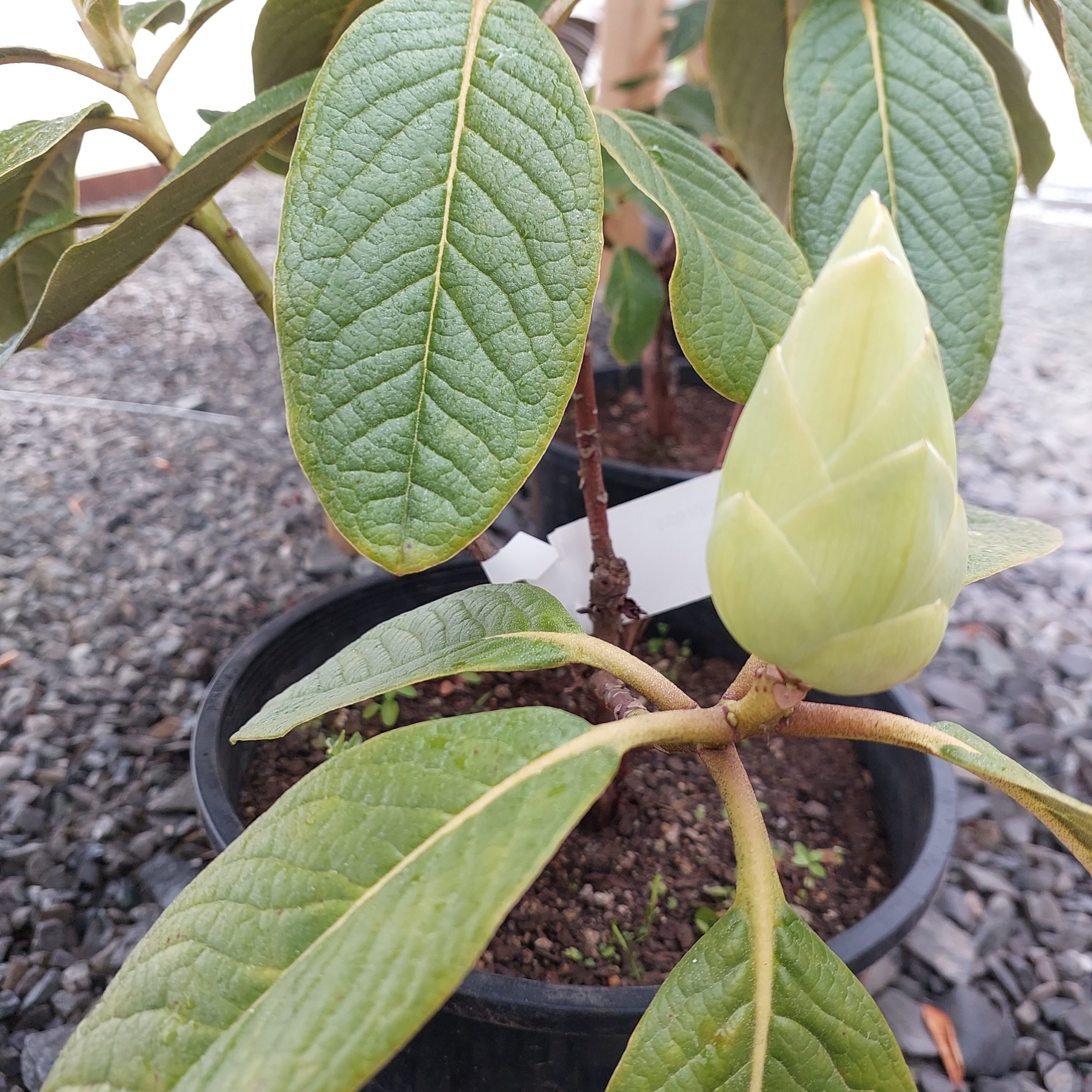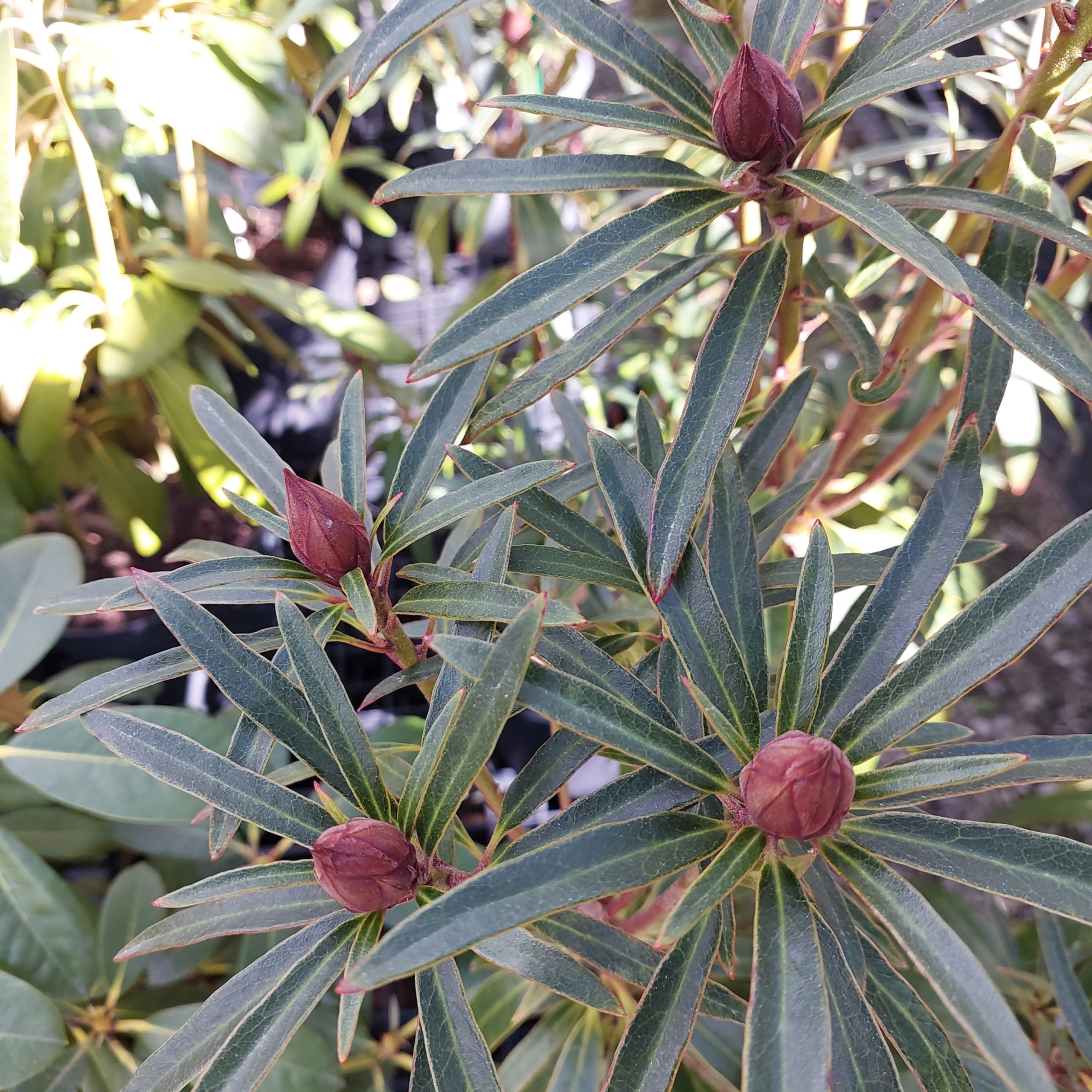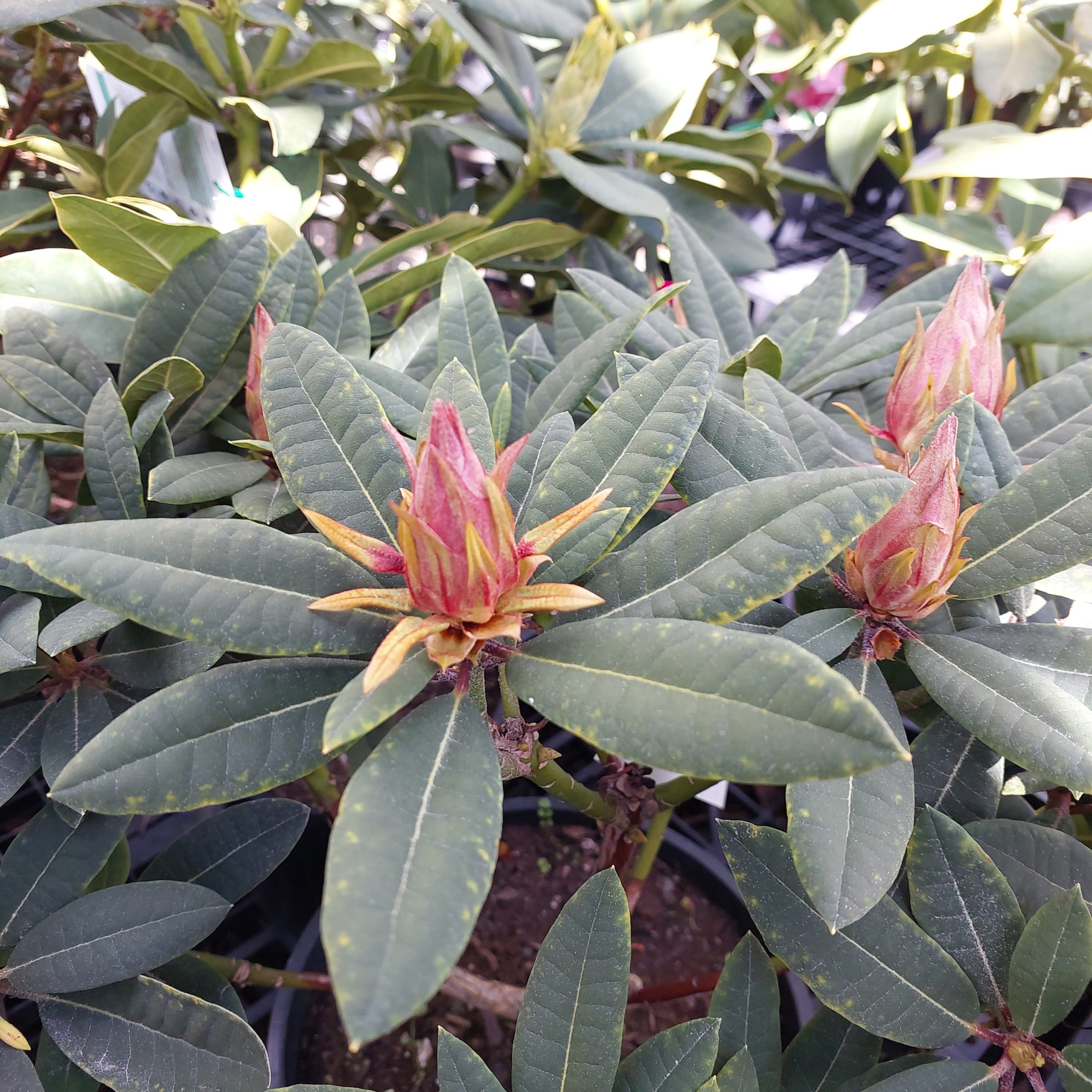A single rhododendron flower bud typically contains multiple flower buds within it.
Rhododendron buds are fascinating! Here are some interesting facts:
Flower and Leaf Buds Are Different: Rhododendrons form two types of buds—flower buds and leaf buds. Flower buds are larger and more rounded, while leaf buds are smaller and more pointed.
Dormant Buds: Rhododendron buds form during late summer and remain dormant through the winter. This is why it’s common to see them, even in cold weather, preparing for their bloom in the spring.
Bud Scales: The buds are protected by scales, which shield the developing flowers or leaves from harsh weather. As spring approaches, the scales fall away, allowing the buds to unfurl.
Indumentum on Buds: Some rhododendrons develop a soft covering of fine hairs, or indumentum, on their buds, which can help protect them from moisture loss and cold temperatures.
Some rhododendrons are known for having particularly unique or striking buds. Here are a few with the most interesting buds:
- Close-up of a brown, indumentum on the Holy Moses Rhododendron flower bud
- Close-up of Ivory Empress Rhododendron The flower bud doubles in size!
- A rhododendron species Gravillia
- Ross Maude Rhododendron Flower Bud
Frost Resistance: Rhododendron buds are surprisingly hardy. While a hard frost can sometimes damage them, many species and hybrids have evolved to withstand cold climates and still bloom beautifully in the spring.
Bud Blast: A condition known as “bud blast” can cause rhododendron buds to turn brown and die before opening, usually due to a fungal infection. However, it doesn’t necessarily harm the plant long-term.
Bud Color Changes: As the buds develop, they often change color, giving clues about the upcoming bloom. Some may start off green and shift to vibrant colors, giving a preview of the blossoms to come!
Depending on the species or hybrid. On average, each bud holds about 6 to 12 individual flowers. In larger or more robust varieties, there can be even more, sometimes up to 20 flowers per bud!
These individual flowers are tightly packed inside the bud, ready to open and create the showy, clustered bloom characteristic of rhododendrons. The number of flowers per bud can also be influenced by growing conditions and the health of the plant.
They’re a critical part of the plant’s growth cycle and an indicator of the beautiful blooms that follow.




